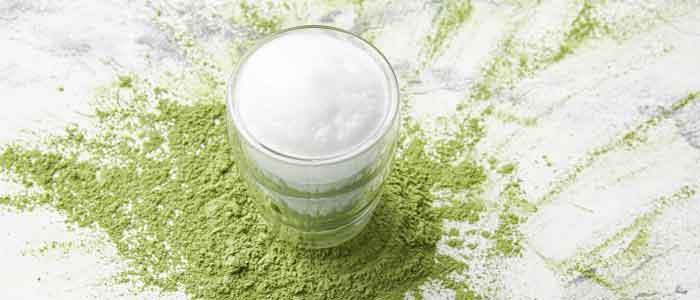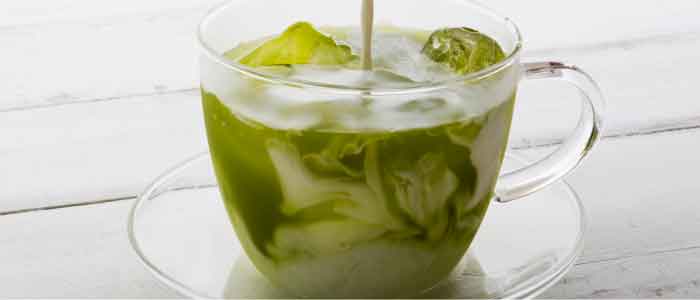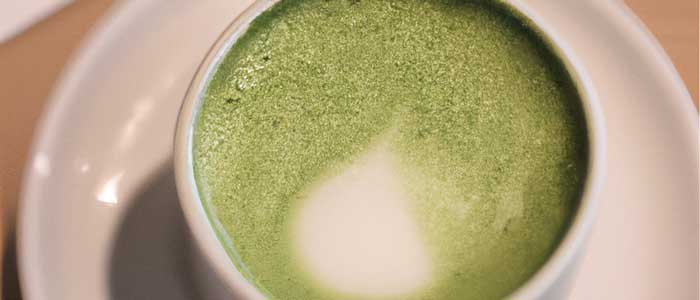Fasten your seatbelts, folks! We’re diving into the frothy, vibrant green world of one of the trendiest beverages on the planet – Matcha Lattes! They’re hip, they’re delicious, and they make your Instagram feed look like a million bucks. But let’s pump the brakes for a second and ask the question that’s been lingering in the air: “Sure, matcha lattes are as trendy as mom jeans and plant babies, but are they actually good for you?” Let’s sift through the matcha leaves and uncover the truth. Buckle up; it’s going to be a wild, green ride!
Key Takeaways:
- The Popularity of Matcha Lattes: These trendy beverages have taken the world by storm, but it’s important to understand what’s really in them.
- Ingredients Matter: The nutritional value of a matcha latte can greatly vary depending on the type of milk, sweeteners, and quality of matcha used.
- Health Implications: While matcha itself is packed with health benefits, the overall nutritional profile of a matcha latte can be influenced by added ingredients, potentially offsetting some of the health benefits.
- Balancing Taste and Health: Making a healthier matcha latte is achievable by making smart choices in ingredients and preparation methods.
- Informed Decisions: Knowing the health implications of drinking matcha lattes can guide consumers to make informed decisions that align with their health goals and taste preferences.
The Matcha Latte: What’s in it?

Alright, it’s time for us to roll up our sleeves and do some detective work! What makes a matcha latte a matcha latte? Well, at its core, it’s pretty simple: matcha powder + hot water + your milk of choice. But that’s like saying a rainbow is just light through water droplets – true, but missing the magic.
Your average matcha latte is a heavenly blend of finely ground matcha (think: green tea on steroids), combined with hot water to form a shot of intense, pure matcha. This is then serenaded with steamed milk of your choice (cows, almonds, oats, and even peas have had their moment in the spotlight) and topped off with a delicate layer of froth.
But let’s not forget the variations! In the adventurous world of matcha lattes, you’ve got a spectrum as wide as the northern lights. Fancy a dash of lavender or a hint of vanilla? Want to sweeten the deal with honey, or keep it plant-based with agave? The world is your matcha bowl! Now that we’ve got the basics down, let’s get to the heart of the matter. Just how good (or not) is this green goodness for us? Stay tuned!
[Related reading: What is matcha?]
The Sweet, Sweet Taste: Breaking Down Matcha Latte’s Nutritional Value
Next stop on our journey to the center of a matcha latte: the nitty-gritty nutritional landscape. Let’s strap on our hiking boots, grab our binoculars, and take a closer look.
The base of our vibrant green friend is, of course, the matcha powder. It’s the Hulk of the tea world – small but incredibly powerful. Packed with antioxidants, vitamins, and a subtle caffeine kick that won’t have you climbing the walls.
[Source: Health Benefits and Chemical Composition of Matcha Green Tea: A Review]
But hold your green horses – it’s not all rainbows and butterflies.
Now let’s bring in the dairy brigade. Whether you’re a fan of classic cow’s milk, prefer the nutty twist of almond milk, or have hopped on the oat milk bandwagon, each adds its own splash of nutritional pros and cons.
And here comes the sweet twist – the sweetener! The sugar in your latte can be the villain in our matcha story. If you like your latte sweet as a summer’s day, remember, it could turn your healthy drink into a sugary saboteur. But fear not, my sweet-toothed friends, there are plenty of healthier alternatives to keep your latte lean.
So, is our dear friend matcha latte a wellness superhero or a sneaky villain in disguise? The plot thickens, and we are about to uncover the truth!
[Related reading: Health benefits of Matcha]
To Sip or Not to Sip? Health Implications of Drinking Matcha Lattes

Here we are, standing at the crossroads of deliciousness and healthiness, asking ourselves: “To sip or not to sip?” Well, let’s don our detective hats and solve this matcha mystery.
On one hand, our green friend brings a cornucopia of benefits to the table. Matcha alone is a powerhouse of antioxidants that wouldn’t think twice about wrestling free radicals to the ground. It can also give you a gentle caffeine buzz – think of it as the lullaby of the caffeine world. It picks you up without letting you crash.
But on the other hand, that lovely sweetness and creamy texture come with a price tag. Sweeteners can turn your healthy sip into a sugary trap, while high-fat dairy might make your calorie counter quiver in fear.
I remember my own ‘matcha latte awakening’. I thought I was riding the health wave, one matcha latte at a time, only to realize my daily treat was more of a dessert in disguise. Let’s just say, it was a bit of a ‘green’ heartbreak.
But don’t let my story put you off. As the wise nutritionists often say, moderation is key. Like most things in life, matcha lattes can be a part of a healthy diet – if we mind the extras we put in it.
So, will you take the green leap? The decision, my friends, is in your cups!
The Green Truth: Are Matcha Lattes Really Good for You?
It’s crunch time, folks! Time to spill the (green) beans and answer the million-dollar question: Are matcha lattes really good for you?
We’ve seen both sides of the coin. On the shiny side, matcha lattes are full of antioxidants, offer a gentle caffeine boost, and did I mention they taste like a liquid dream? On the flip side, depending on how you whip up your latte, you might be guzzling down a dessert disguised as a health drink. Sweeteners and full-fat dairy, we’re looking at you.
Imagine a scale with a pile of fresh, vibrant green matcha on one side, and a mountain of sugar on the other. The balance shifts depending on how you craft your latte. See, the matcha itself isn’t the problem – it’s the company it keeps.
So, here’s my advice: treat your matcha latte like you’d treat any good relationship – with a little bit of balance and a whole lot of honesty. If you’re sipping on a sugar-loaded, cream-topped matcha latte every day, maybe it’s time to have ‘the talk’. Otherwise, keep calm and sip on your mindful matcha!
Remember, there’s no harm in a little indulgence now and then. As long as you keep your matcha latte more ‘matcha’ and less ‘sugary dessert’, you and your latte can live happily ever after. So sip away, friends, sip away.
A Spoonful of Balance: Making Healthier Matcha Lattes
We’ve got a challenge on our hands, matcha lovers! How can we make sure our beloved matcha latte is more ‘morning zen’ and less ‘sugar bomb’? Fear not, for I’ve got some tips and tricks up my sleeve to help you keep your matcha lattes as pure as a yoga instructor’s thoughts during a meditation session.
- The Milk Dilemma: Yes, whole milk makes your latte creamy and dreamy, but there are lighter options that are just as tasty. Ever tried almond milk or oat milk? They might just surprise you. I once had an oat milk matcha latte that was so creamy, I thought they’d accidentally used cream. Spoiler alert: they hadn’t.
- Sweeten Wisely: We all have a sweet tooth, but there are ways to keep it in check. Raw honey, stevia, or a dash of coconut sugar can add a touch of sweetness without making your latte a dental nightmare.
- Keep it Real: When it comes to matcha, quality matters. Go for high-grade, pure matcha powders. They might be a bit pricier, but your health and taste buds will thank you.
- DIY Over Buy: Making your matcha latte at home gives you full control over what goes in it. Plus, there’s something oddly satisfying about whisking your own matcha. It’s like you’re part of a centuries-old tradition – because you are!
So there you have it – my secrets to a healthier matcha latte. Now go forth, balance in hand, and conquer the world… or at least, the kitchen!
[Related article: Why organic matcha green tea is a must-have superfood]
The Perfect Brew: Matcha Latte Recipe

- Choose Your Matcha: Opt for high-quality, premium-grade matcha for the richest flavor and highest health benefits. It might be a bit pricier, but it’s worth it!
- Warm Your Milk: Select a low-calorie, plant-based milk like almond or oat milk. Warm about a cup of it in a small saucepan over medium heat, but avoid letting it boil.
- Sift Your Matcha: To avoid clumps in your latte, sift one to two teaspoons of matcha powder into a cup.
- Add a Little Hot Water: Pour a small amount of hot (not boiling) water into the cup with the matcha. Stir with love until it forms a smooth paste.
- Whisk It Up: Using a bamboo whisk or a frother, whisk the matcha paste in a zigzag motion until it becomes slightly frothy.
- Combine Your Drink: Pour your warmed milk into the cup with the matcha. If you have a milk frother, now’s the time to use it! Froth the top layer of the milk for a little bit of foam on top.
- Sweeten Naturally: Consider adding a small amount of a natural sweetener, such as raw honey, stevia, or agave syrup. Remember, the less added sugar, the healthier!
- Boost It: For added health benefits, consider mixing in extras like a dash of cinnamon, a teaspoon of collagen powder, or a bit of vanilla extract.
- Enjoy Mindfully: Take a moment to savor your healthier homemade matcha latte, appreciating the flavor and how it makes your body feel.
Remember, the best matcha latte is one that you enjoy drinking, so feel free to tweak this matcha latte recipe to suit your taste preferences and dietary needs.
Conclusion
We’ve come a long way from questioning the healthfulness of our Instagrammable green beverage, haven’t we? It turns out that matcha lattes, like most things in life, can be as angelic or as devilish as we make them.
Final Thoughts: Sure, the whipped cream-topped, sugar-laden matcha latte at your local coffee shop might be more dessert than breakfast. But that doesn’t mean we should give up on our green-hued friend. Remember, it’s not the matcha that’s the culprit, it’s how we dress it up.
Stay Green, Stay Lean: For those of you still on the fence, remember, there’s a middle ground. Find a balance that works for you – be it switching to a healthier milk, reducing the sweetener, or choosing higher-grade matcha. There’s a world of matcha possibilities to explore, each one as delicious as the last.
So, here’s my challenge to you: Next time you’re in the mood for a matcha latte, why not try making one yourself? Keep it balanced, keep it real, and most importantly, keep sipping. After all, life’s too short for bad lattes.
That’s the tea, folks. Or should I say…that’s the latte. Cheers to your health!
You might be interested in:


